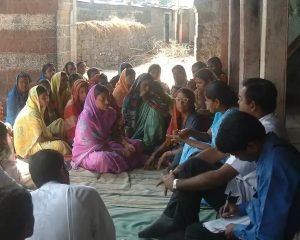Unbundling the Standalone Micro Insurance Company Recommendations

Image by Uplift Mutuals
The recent recommendations by the IRDAI committee to allow standalone or exclusive Micro Insurance Companies (SAMI) has caused quite a stir and excitement in the financial inclusion space. In this blog, we de-code what it means for the microinsurance sector in general and mutuals and cooperatives in particular.
What’s Great?
- The report acknowledges the work done by cooperatives and mutual models in India and across the world
- The report discusses the Risk Based Capital Approach which makes a lot of sense for cooperatives and mutuals
- The report recommends reinsurance for cooperatives and mutuals
- The D in IRDAI gets a real push with the call for the setting up a Micro Insurance Development Fund
- The report encourages the development of a self-regulatory mechanism
What’s Good?
- Entry level capital requirement of INR 20 Crores (USD 2.6 million): This will favour companies that can raise equity/ funding. Also, this capital is for only one line of business, for life and non-life it would be INR 20 Cr each. Micro Finance Institutions (MFI’s) with a large customer base, deep pockets and profitable cooperatives can take the lead in setting up shop.
For mutuals and not-for-profits in the space, it is still a very heavy ask, why should investors put their money in a low-margin, non-profit, member driven model? Impact investors however could take the lead here or mutuals could crowd-fund the same. Microinsurance mutuals in the Philippines, where the model has been extremely successful, have a capital requirement of less than a crore (INR 76 lakh), whereas Indian mutuals will require 20 Cr to begin with.
- Use of end-to-end digital technology for SAMI companies: There is a never before call for a development fund and a common digital infrastructure which was missing. The work done around the National Health Stack by Ispirt volunteers including the claims engine and Uplift mutuals UTTAM platform, are some examples that can further build this narrative.
What merits further discussion?
1. While the suggestion of removing the entry barrier has been appreciated by all, do we not need to ponder if this was the only issue? That the desired penetration of microinsurance in India, could not be achieved by a Rs 100Cr capital requirement is known, it then merits that we consider other factors that could lead to a better uptake rather than just stopping at reduction in capital?
2. How should microinsurance look like from a demand perspective? In this age of customer-design centricity, are there other aspects/risks that need to be considered?
3. The report talks about a Risk Based Capital Approach and acknowledges the work done by mutuals and cooperatives in India and Asia. Building on the existing data and approach, could other important differentiations be explored?
4. Another welcome recommendation talked about is reinsurance for mutuals and cooperatives.
What would truly build the sector will be to allow reinsurers to work with mutuals and cooperatives without fixed upfront capital requirement. Reinsurers come with loads of experience, and they tend to be conservative.
Allowing reinsurers to directly underwrite the risks of mutuals and cooperatives without the need for a fixed capital base may be a game changer for those mutuals and cooperatives who already have prudential risk management in place. A start with short term products can be the building blocks of a Risk Based Capital Approach.
What if the “Cell Captive Model” (mentioned in the report) is run between a SAMI (a mutual micro-insurer) and a reinsurer (instead of an insurance company) and can be put to test as part of the ongoing sandbox experiments.
5. While cooperatives are defined within the current Insurance Act, mutuals were removed in the 2015 amendment. It will be a curious case, if mutuals will find its place back when the recommendations are reframed into regulations and what would they then look like.
While the IRDA SAMI committee has made suggestions as to how the IRDA can make these recommendations come true, until they are notified, they remain alas, recommendations.
This research was developed as part of the Bharat Inclusion Research Fellowship.
